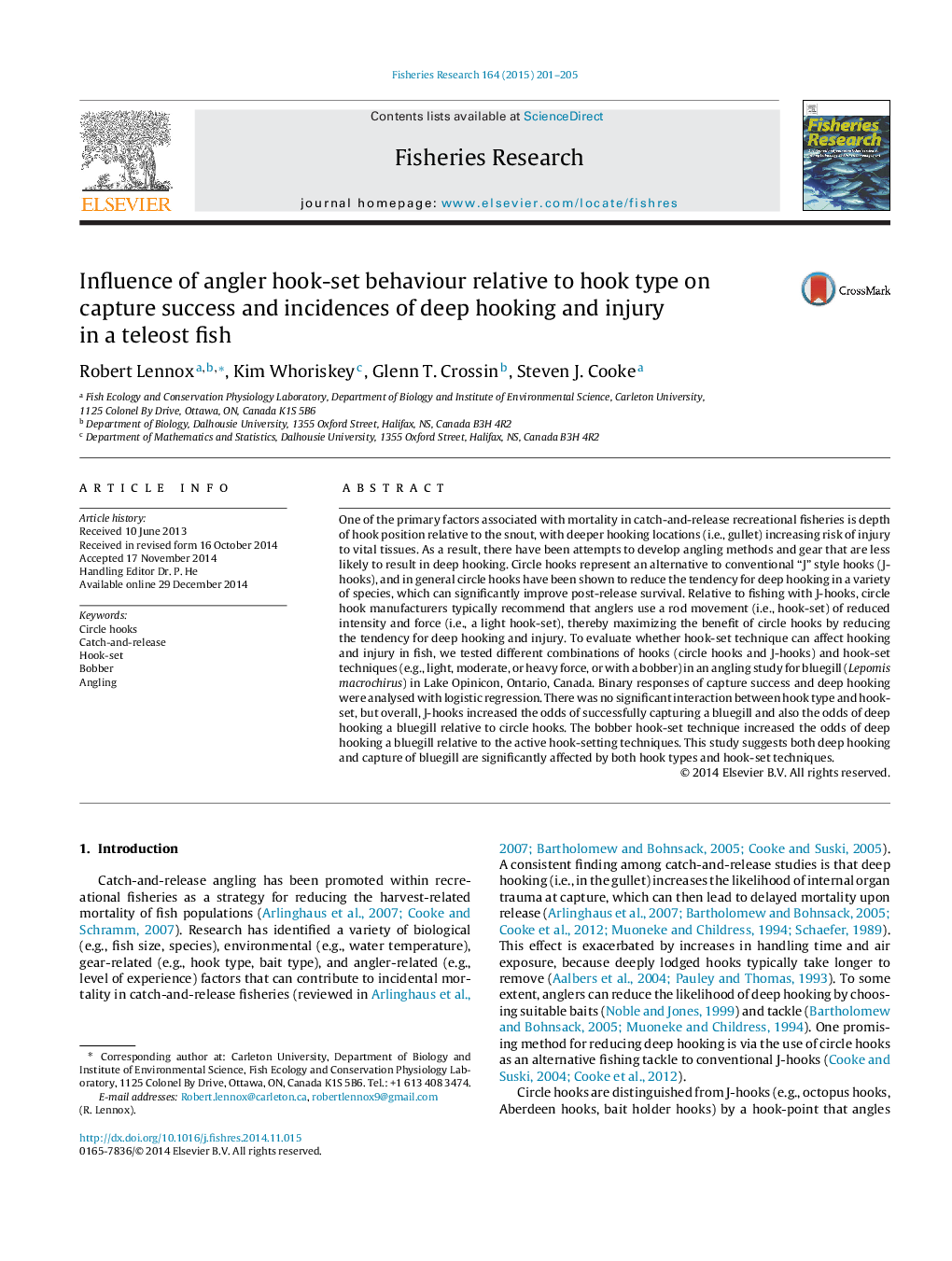| Article ID | Journal | Published Year | Pages | File Type |
|---|---|---|---|---|
| 6385703 | Fisheries Research | 2015 | 5 Pages |
â¢Comparison of deep hooking and capture success with different hook-set intensities.â¢Rates of capture success and deep hooking depend on hook-set technique.â¢Circle hooks set with no force yielded low odds of deep hooking and bleeding.â¢Bobbers can increase rates of deep hooking.
One of the primary factors associated with mortality in catch-and-release recreational fisheries is depth of hook position relative to the snout, with deeper hooking locations (i.e., gullet) increasing risk of injury to vital tissues. As a result, there have been attempts to develop angling methods and gear that are less likely to result in deep hooking. Circle hooks represent an alternative to conventional “J” style hooks (J-hooks), and in general circle hooks have been shown to reduce the tendency for deep hooking in a variety of species, which can significantly improve post-release survival. Relative to fishing with J-hooks, circle hook manufacturers typically recommend that anglers use a rod movement (i.e., hook-set) of reduced intensity and force (i.e., a light hook-set), thereby maximizing the benefit of circle hooks by reducing the tendency for deep hooking and injury. To evaluate whether hook-set technique can affect hooking and injury in fish, we tested different combinations of hooks (circle hooks and J-hooks) and hook-set techniques (e.g., light, moderate, or heavy force, or with a bobber) in an angling study for bluegill (Lepomis macrochirus) in Lake Opinicon, Ontario, Canada. Binary responses of capture success and deep hooking were analysed with logistic regression. There was no significant interaction between hook type and hook-set, but overall, J-hooks increased the odds of successfully capturing a bluegill and also the odds of deep hooking a bluegill relative to circle hooks. The bobber hook-set technique increased the odds of deep hooking a bluegill relative to the active hook-setting techniques. This study suggests both deep hooking and capture of bluegill are significantly affected by both hook types and hook-set techniques.
